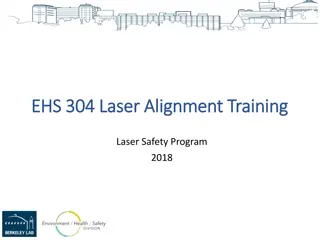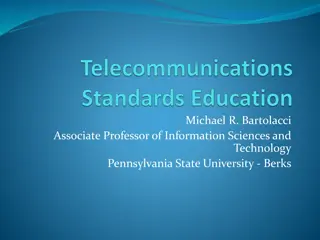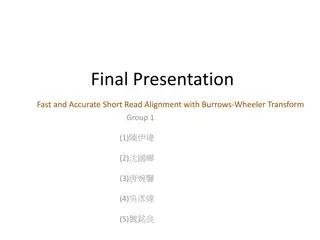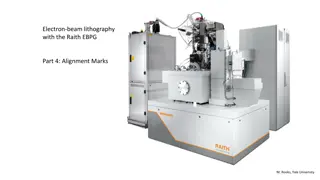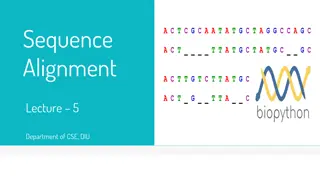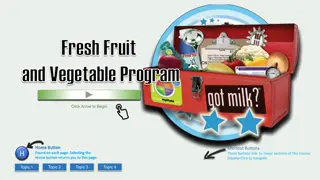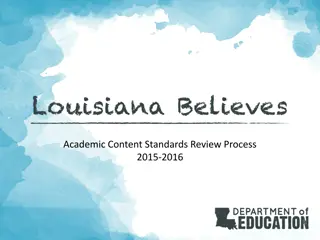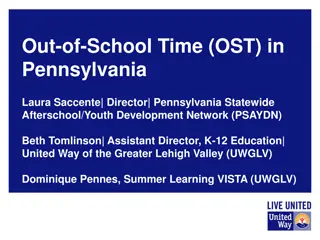Mystery Science Pennsylvania Academic Standards Alignment
Mystery Science aligns with Pennsylvania Academic Standards for Science and Technology, offering core lessons and mini-lessons for K-5 students. Each lesson includes extensions for further learning and hands-on activities. The curriculum covers topics such as life cycles, structures, behaviors, and seasonal changes in plants and animals, integrating 3-dimensional learning concepts.
Download Presentation

Please find below an Image/Link to download the presentation.
The content on the website is provided AS IS for your information and personal use only. It may not be sold, licensed, or shared on other websites without obtaining consent from the author. Download presentation by click this link. If you encounter any issues during the download, it is possible that the publisher has removed the file from their server.
E N D
Presentation Transcript
PA Mystery Science Alignment with Pennsylvania Academic Standards for Science and Technology. Mystery Science - Pennsylvania Alignment Mystery Science aligns to the Pennsylvania Academic Standards for Science and Technology. The core lesson (exploration & activity) is designed to take one hour per week. To view each lesson s alignment to 3 dimensional learning (disciplinary core ideas, science and engineering practices, and crosscutting concepts) view our NGSS Alignment document. Mini-lessons are 5-minute videos that answer K-5 student questions and can be used as a jumping off point to engage learners for a full lesson planned by the teacher. Lesson Extensions. Extensions are available for each lesson and offer an opportunity for students to continue their science content learning. They include assessments and a curated collection of additional activity suggestions, online resources, project ideas, and readings to help extend the learning. Table of Contents Kinder gar t en Kinder gar t en Life Science Earth & Space Science Physical Science Gr ade 1 Gr ade 1 Life Science Earth & Space Science Physical Science Gr ade 2 Gr ade 2 Life Science Earth & Space Science Physical Science Gr ade 3 Gr ade 3 Life Science Earth & Space Science Physical Science Gr ade 4 Gr ade 4 Life Science Earth & Space Science Physical Science Gr ade 5 Gr ade 5 Life Science Earth & Space Science Physical Science https://mysteryscience.com/docs/pennsylvania
Kindergarten Mystery Science aligns to the Pennsylvania Academic Standards for Science and Technology. The core lesson (exploration & activity) is designed to take one hour per week. Extensions can expand upon each lesson. To view each lesson s alignment to 3 dimensional learning (disciplinary core ideas, science and engineering practices, and crosscutting concepts) view our NGSS Alignment document. Mini-lessons are 5-minute videos that answer K-5 student questions and can be used as a jumping off point to engage learners for a full lesson planned by the teacher. PA Pennsylvania Academic Standards for Science and Technology Mystery Science Unit Mystery Science Grade Strand Topic Mystery Science Lessons 3.1.K.A1 Identify the similarities and differences of living and non-living things. Pennsylvania specific standard 3.1.K.A3 Observe, compare, and describe stages of life cycles for plants and/or animals. Organisms & Cells Pennsylvania specific standard 3.1.K.A5 Observe and describe structures and behaviors of a variety of common animals. Lesson 1: Why do birds have beaks? Lesson 2, Read Along: Why do baby ducks follow their mother? Lesson 3: Why are polar bears white? Lesson 4, Read Along: Why do family members look alike? Plant & Animal Superpowers Biological Sciences Grade 1 3.1.K.B1 Observe and describe how young animals resemble their parents and other animals of the same kind. Genetics Mini-lessons Mini-lesson: What's that red thing on a turkey?** Mini-lesson: Why do owls say "hoo"?** 3.1.K.C2 Describe changes animals and plants undergo throughout the seasons. Mini-lesson: Why do leaves change color in the fall?** Mini-lesson: How do flowers bloom in the spring?** Mini-lesson: Why do animals come back after going to warm places in winter? Mini-lesson: Where do bugs go in winter? Mini-lessons Evolution 3.1.K.C3 Unifying Themes (Constancy & Change): Describe changes that occur as a result of climate. **Indicates a mini-lesson with an included hands-on STEAM activity from Mystery Science https://mysteryscience.com/docs/pennsylvania
Kindergarten, continued Mystery Science aligns to the Pennsylvania Academic Standards for Science and Technology. The core lesson (exploration & activity) is designed to take one hour per week. Extensions can expand upon each lesson. To view each lesson s alignment to 3 dimensional learning (disciplinary core ideas, science and engineering practices, and crosscutting concepts) view our NGSS Alignment document. Mini-lessons are 5-minute videos that answer K-5 student questions and can be used as a jumping off point to engage learners for a full lesson planned by the teacher. PA Pennsylvania Academic Standards for Science and Technology Mystery Science Unit Mystery Science Grade Strand Topic Mystery Science Lessons 3.3.K.A1 Distinguish between three types of earth materials -- rock, soil, and sand. Pennsylvania specific standard 3.3.K.A4 Identify sources of water for human consumption and use. Pennsylvania specific standard Lesson 1, Read-Along: How can you get ready for a big storm? Lesson 2: Have you ever watched a storm? Lesson 3: How many different kinds of weather are there? Wild Weather Earth Structure, Processes, & Cycles Earth & Space Sciences Grade K 3.3.K.A5 Record daily weather conditions using simple graphs, charts, and graphs. Identify seasonal changes in the environment. Distinguish between types of precipitation. Circle of Seasons Lesson 1, Read-Along: How do you know what to wear for the weather? Lesson 2: What would the weather be like on your birthday? Lesson 3: Why do birds lay eggs in the spring? Grade K https://mysteryscience.com/docs/pennsylvania
Kindergarten, continued Mystery Science aligns to the Pennsylvania Academic Standards for Science and Technology. The core lesson (exploration & activity) is designed to take one hour per week. Extensions can expand upon each lesson. To view each lesson s alignment to 3 dimensional learning (disciplinary core ideas, science and engineering practices, and crosscutting concepts) view our NGSS Alignment document. Mini-lessons are 5-minute videos that answer K-5 student questions and can be used as a jumping off point to engage learners for a full lesson planned by the teacher. PA Mystery Science Unit Mystery Science Grade Pennsylvania Academic Standards for Science and Technology Strand Topic Mystery Science Lessons 3.2.K.A1 Identify and classify objects by observable properties of matter. Compare different kinds of materials and discuss their uses. Pennsylvania specific standard Chemistry 3.2.K.A3 Describe the way matter can change. Pennsylvania specific standard 3.2.K.A5 Unifying Themes (Constancy & Change): Recognize that everything is made of matter. Pennsylvania specific standard Physical Sciences 3.2.K.B3 Describe how temperature can affect the body. Lesson 1, Read-Along: How could you walk barefoot across hot pavement without burning your feet? Lesson 2: How could you warm up a frozen playground? Lesson 3: Why does it get cold in winter? Sunny Skies 3.2.K.B6 Unifying Themes (Energy): Recognize that light from the sun is an important source of energy for living and non-living systems and some source of energy is needed for all organisms to stay alive and grow. Grade K Physics https://mysteryscience.com/docs/pennsylvania
Grade 1 Mystery Science aligns to the Pennsylvania Academic Standards for Science and Technology. The core lesson (exploration & activity) is designed to take one hour per week. Extensions can expand upon each lesson. To view each lesson s alignment to 3 dimensional learning (disciplinary core ideas, science and engineering practices, and crosscutting concepts) view our NGSS Alignment document. Mini-lessons are 5-minute videos that answer K-5 student questions and can be used as a jumping off point to engage learners for a full lesson planned by the teacher. PA Pennsylvania Academic Standards for Science and Technology Mystery Science Unit Mystery Science Grade Strand Topic Mystery Science Lessons Lesson 4, Read Along: How do animals make their homes in the forest? Lesson 6, Read Along: Why would you want an old log in your backyard? Plant & Animal Secrets 3.1.1.C3 Unifying Themes (Constancy & Change): Describe changes that occur as a result of habitat. Grade K Evolution 3.1.1.A1 Categorize living and non-living things by external characteristics. Pennsylvania specific standard Plant & Animal Secrets 3.1.1.A2 Investigate the dependence of living things on the sun s energy, water, food/nutrients, air, living space, and shelter. Lesson 1: Why do woodpeckers peck wood? Lesson 2, Read Along: Where do animals live? Lesson 3: How can you find animals in the woods? Grade K Biological Sciences Organisms & Cells Plant & Animal Superpowers Lesson 5: Why don t trees blow down in the wind? Lesson 6, Read Along: What do sunflowers do when you re not looking? 3.1.1.A5 Identify and describe plant parts and their function. Grade 1 Plant & Animal Secrets 3.1.1.B1 Grow plants from seed and describe how they grow and change. Compare to adult plants. Grade K Genetics Lesson 5: How do plants and trees grow? https://mysteryscience.com/docs/pennsylvania
Grade 1, continued Mystery Science aligns to the Pennsylvania Academic Standards for Science and Technology. The core lesson (exploration & activity) is designed to take one hour per week. Extensions can expand upon each lesson. To view each lesson s alignment to 3 dimensional learning (disciplinary core ideas, science and engineering practices, and crosscutting concepts) view our NGSS Alignment document. Mini-lessons are 5-minute videos that answer K-5 student questions and can be used as a jumping off point to engage learners for a full lesson planned by the teacher. PA Pennsylvania Academic Standards for Science and Technology Mystery Science Unit Mystery Science Grade Strand Topic Mystery Science Lessons 3.3.1.A1 Observe, describe, and sort earth materials. Compare the composition of different soils. Pennsylvania specific standard Earth Structure, Processes, & Cycles 3.3.1.A4 Identify and describe types of fresh and salt-water bodies (ocean, rivers, lakes, ponds). Pennsylvania specific standard Earth & Space Sciences 3.3.1.A5 Become familiar with weather instruments. Collect, describe, and record basic information about weather over time. Pennsylvania specific standard Origin and Evolution of the Universe Lesson 1: Could a statue s shadow move? Lesson 2, Read Along: What does your shadow do when you re not looking? Spinning Sky 3.3.1.B1 Explain why shadows fall in different places at different times of the day. Grade 1 https://mysteryscience.com/docs/pennsylvania
Grade 1, continued Mystery Science aligns to the Pennsylvania Academic Standards for Science and Technology. The core lesson (exploration & activity) is designed to take one hour per week. Extensions can expand upon each lesson. To view each lesson s alignment to 3 dimensional learning (disciplinary core ideas, science and engineering practices, and crosscutting concepts) view our NGSS Alignment document. Mini-lessons are 5-minute videos that answer K-5 student questions and can be used as a jumping off point to engage learners for a full lesson planned by the teacher. PA Mystery Science Unit Pennsylvania Academic Standards for Science and Technology Strand Topic Mystery Science Lessons 3.2.1.A1 Observe and describe the properties of liquids and solids. Investigate what happens when solids are mixed with water and other liquids are mixed with water. 3.2.1.A3 Identify how heating, melting, cooling, etc., may cause changes in properties of materials. Physical Sciences Mini-lessons: How is plastic made? Mini-lessons: How is glass made? Mini-lessons Chemistry 3.2.1.A4 Observe and describe what happens when substances are heated or cooled. Distinguish between changes that are reversible (melting, freezing) and not reversible (e.g. baking a cake, burning fuel). 3.2.1.A5 Unifying Themes (Constancy & Change): Recognize that everything is made of matter. https://mysteryscience.com/docs/pennsylvania
Grade 1, continued Mystery Science aligns to the Pennsylvania Academic Standards for Science and Technology. The core lesson (exploration & activity) is designed to take one hour per week. Extensions can expand upon each lesson. To view each lesson s alignment to 3 dimensional learning (disciplinary core ideas, science and engineering practices, and crosscutting concepts) view our NGSS Alignment document. Mini-lessons are 5-minute videos that answer K-5 student questions and can be used as a jumping off point to engage learners for a full lesson planned by the teacher. PA Mystery Science Unit Mystery Science Grade Pennsylvania Academic Standards for Science and Technology Strand Topic Mystery Science Lessons Lesson 1: What s the biggest excavator? Lesson 2, Read Along: Why do builders need so many big machines? Lesson 3: How can you knock down a wall made of concrete? Lesson 4, Read Along: How can you knock down the most bowling pins? Lesson 5: How can be protect a mountain town from falling rocks? Lesson 6, Read Along: How could you invent a trap? Force Olympics 3.2.1.B1 Demonstrate various types of motion. Observe and describe how pushes and pulls change the motion of objects. Grade K Lights & Sounds Lesson 1: How do they make silly sounds in cartoons? Lesson 2, Read Along: Where do sounds come from? Physical Sciences Mini-lessons Physics Mini-lesson: Why can't airplanes fly to space**? 3.2.1.B3 Observe and record daily temperatures. Draw conclusions from daily temperature records as related to heating and cooling. Pennsylvania specific standard 3.2.1.B5 Compare and contrast how light travels through different materials. Explore how mirrors and prisms can be used to redirect a light beam. Lesson 3: What if there were no windows? Lesson 4, Read Along: Can you see in the dark? Lesson 5: How could you send a secret message to someone far away? Lesson 6, Read Along: How do boats find their way in the fog? Lights & Sounds Grade 1` 3.2.1.B6 Unifying Themes (Energy): Recognize that light from the sun is an important source of energy for living and nonliving systems and some source of energy is needed for all organisms to stay alive and grow. https://mysteryscience.com/docs/pennsylvania
Grade 2 Mystery Science aligns to the Pennsylvania Academic Standards for Science and Technology. The core lesson (exploration & activity) is designed to take one hour per week. Extensions can expand upon each lesson. To view each lesson s alignment to 3 dimensional learning (disciplinary core ideas, science and engineering practices, and crosscutting concepts) view our NGSS Alignment document. Mini-lessons are 5-minute videos that answer K-5 student questions and can be used as a jumping off point to engage learners for a full lesson planned by the teacher. PA Pennsylvania Academic Standards for Science and Technology Mystery Science Unit Mystery Science Grade Strand Topic Mystery Science Lessons 3.1.2.A3 Identify similarities and differences in the life cycles of plants and animals. Lesson 1: How did a tree travel halfway around the world? Lesson 2: Could a plant survive without light? Lesson 3: Why do trees grow so tall? Lesson 4: Should you water a cactus? Lesson 5: Where do plants grow best? Organisms & Cells 3.1.2.A5 Explain how different parts of a plant work together to make the organism function. Plant Grade 2 Adventures Lesson 1: How many different kinds of animals are there? Lesson 2: Why would a wild animal visit a playground? Lesson 3: Why do frogs say ribbit ? Lesson 4: How could you get more birds to visit a bird feeder? Animal Adventures 3.1.2.C2 Explain that living things can only survive if their needs are being met. Grade 2 Biological Sciences Evolution 3.1.2.C3 Unifying Themes (Constancy & Change): Describe some plants and animals that once lived on Earth (e.g. dinosaurs) but cannot be found anymore. Compare them to now living things that resemble them in some way (e.g. lizards and birds). https://mysteryscience.com/docs/pennsylvania
Grade 2, continued Mystery Science aligns to the Pennsylvania Academic Standards for Science and Technology. The core lesson (exploration & activity) is designed to take one hour per week. Extensions can expand upon each lesson. To view each lesson s alignment to 3 dimensional learning (disciplinary core ideas, science and engineering practices, and crosscutting concepts) view our NGSS Alignment document. Mini-lessons are 5-minute videos that answer K-5 student questions and can be used as a jumping off point to engage learners for a full lesson planned by the teacher. PA Mystery Science Unit Pennsylvania Academic Standards for Science and Technology Strand Topic Mystery Science Lessons Earth, Structure, Processes, & Cycles 3.3.1.A4 Explore and describe that water exists in solid (ice) and liquid (water) form. Explain and illustrate evaporation and condensation. Stormy Skies Grade 3 Lesson 1: Where do clouds come from? Earth & Space Sciences Lesson 3: How can the sun help you if you re lost? Lesson 4, Read Along: Why do you have to go to bed early in the summer? Lesson 5: Why do the stars come out at night? Lesson 6, Read Along: How can stars help you if you get lost? 3.3.2.B1 Observe and record: location of the Sun and the Moon in the sky over a day; changes in the appearance of the Moon over a month. Observe, describe, and predict seasonal patterns of sunrise and sunset. Origin & Evolution of the Universe Spinning Sky Grade 3 3.2.2.A3 Demonstrate how heating and cooling may cause changes in the properties of materials. Pennsylvania specific standard 3.2.2.A4 Experiment and explain what happens when two or more substances are combined (e.g. mixing, dissolving, and separated (e.g. filtering, evaporation). Pennsylvania specific standard Chemistry 3.2.2.A5 Unifying Themes (Constancy & Change): Recognize that everything is made of matter. Pennsylvania specific standard Physical Sciences 3.2.2.B2 Explore and describe how different forms of energy cause change (e.g. sunlight, heat, wind) Stormy Skies Lesson 4: How can you keep a house from blowing away in a windstorm? Grade 3 3.2.2.B6 Unifying Themes (Energy): Recognize that light from the sun is an important source of energy for living and non-living systems and some source of energy is needed for all organisms to stay alive and grow. Physics https://mysteryscience.com/docs/pennsylvania
Grade 3 Mystery Science aligns to the Pennsylvania Academic Standards for Science and Technology. The core lesson (exploration & activity) is designed to take one hour per week. Extensions can expand upon each lesson. To view each lesson s alignment to 3 dimensional learning (disciplinary core ideas, science and engineering practices, and crosscutting concepts) view our NGSS Alignment document. Mini-lessons are 5-minute videos that answer K-5 student questions and can be used as a jumping off point to engage learners for a full lesson planned by the teacher. PA Mystery Science Unit Mystery Science Grade Pennsylvania Academic Standards for Science and Technology Strand Topic Mystery Science Lessons 3.1.3.C1 Recognize that plants survive through adaptations, such as stem growth towards light and root growth downward in response to gravity. Recognize that many plants and animals can survive harsh environments because of seasonal behaviors (e.g. hibernation, migration, trees shedding leaves). Evolution Power of Flowers Lesson 1: Why do plants grow flowers? Lesson 2: Why do plants give us fruit? Grade 3 3.1.3.A5 Identify the structures in plants that are responsible for food production, support, water transport, reproduction, growth, and protection. Mini-lesson: What is the biggest spider in the world?** Mini-lesson: Why are so many people scared of bugs?** 3.1.3.A1 Describe characteristics of living things that help to identify and classify them. Mini-lessons Organisms & Cells 3.1.3.A3 Illustrate how plants and animals go through predictable life cycles that include birth, growth, development, reproduction, and death. Biological Sciences 3.1.3.A2 Describe the basic needs of living things and their dependence on light, food, air, water, and shelter. 3.1.3.B1 Understand that plants and animals closely resemble their parents. Power of Flowers Lesson 3: Why are some apples red and some green? Lesson 4: How could you make the biggest fruit in the world? Grade 3 Genetics 3.1.3.B5 Unifying Themes (Patterns): Identify characteristics that appear in both parents and offspring. Mini-lessons Mini-lesson: What's the biggest apple in the world?** 3.1.3.C2 Describe animal characteristics necessary for survival. Animals Through Time Lesson 1: Where can you find whales in a desert? Lesson 2: How do we know what dinosaurs looked like? Lesson 3: Can you outrun a dinosaur? Evolution (Cont.) Grade 3 3.1.3.C3 Unifying Themes (Constancy & Change): Recognize the fossils provide us information about living things that inhabited the Earth long ago. Mini-lesson: How do polar animals survive the cold?** Mini-lessons **Indicates a mini-lesson with an included hands-on STEAM activity from Mystery Science https://mysteryscience.com/docs/pennsylvania
Grade 3, continued Mystery Science aligns to the Pennsylvania Academic Standards for Science and Technology. The core lesson (exploration & activity) is designed to take one hour per week. Extensions can expand upon each lesson. To view each lesson s alignment to 3 dimensional learning (disciplinary core ideas, science and engineering practices, and crosscutting concepts) view our NGSS Alignment document. Mini-lessons are 5-minute videos that answer K-5 student questions and can be used as a jumping off point to engage learners for a full lesson planned by the teacher. PA Pennsylvania Academic Standards for Science and Technology Mystery Science Unit Mystery Science Grade Strand Topic Mystery Science Lessons 3.3.3.A1 Explain and give examples of the ways in which soil is formed. Pennsylvania specific standard 3.3.3.A2 Identify the physical properties of minerals and demonstrate how minerals can be tested for these different physical properties. Mini-lesson: Can you make lava? Mini-lesson: Why is the ocean salty? Mini-lesson: How are diamonds made? Mini-lessons Earth, Structure, Processes, & Cycles 3.3.3.A4 Connect the various forms of precipitation to the weather in a particular place and time. Lesson 2: How can we predict when it s going to storm? Lesson 3: Why are some places always hot? Earth & Space Sciences Stormy Skies Grade 3 3.3.3.A5 Explain how air temperature, moisture, wind speed and direction, and precipitation make up the weather in a particular place and time. Mini-lessons Mini-lessons: What is the coldest place on Earth? 3.3.3.B1 Relate the rotation of the Earth and day/night, to the apparent movement of the sun, moon, and stars across the sky. Describe the changes that occur in the observable shape of the moon over the course of a month. Mini-lesson: How often do eclipses happen? Mini-lesson: Why do different places have different times? Origin & Evolution of the Universe Mini-lessons https://mysteryscience.com/docs/pennsylvania
Grade 3, continued Mystery Science aligns to the Pennsylvania Academic Standards for Science and Technology. The core lesson (exploration & activity) is designed to take one hour per week. Extensions can expand upon each lesson. To view each lesson s alignment to 3 dimensional learning (disciplinary core ideas, science and engineering practices, and crosscutting concepts) view our NGSS Alignment document. Mini-lessons are 5-minute videos that answer K-5 student questions and can be used as a jumping off point to engage learners for a full lesson planned by the teacher. PA Pennsylvania Academic Standards for Science and Technology Mystery Science Grade Mystery Science Unit Strand Topic Mystery Science Lessons 3.2.3.A1 Differentiate between properties of objects such as size, shape, and weight and properties of materials that make up the objects such as color, texture, and hardness. Differentiate between the three states of matter, classifying a substance as a solid, liquid, or gas. Lesson 1: Why do we wear clothes? Lesson 2: Can you really fry an egg on a hot sidewalk? Lesson 3: Why are so many toys made out of plastic? Lesson 4: What materials might be invented in the future? Lesson 5: Could you build a house out of paper? 3.2.3.A2 Recognize that all objects and materials in the world as made of mater. Material Magic Physical Sciences Grade 2 Chemistry 3.2.3.A3 Demonstrate how heating and cooling may cause changes in the properties of materials including phase changes. 3.2.3.A4 Use basic reactions to demonstrate observable changes in properties of matter (e.g. burning, cooking). 3.2.3.A5 Unifying Themes (Constancy & Change): Recognize that everything is made of matter. https://mysteryscience.com/docs/pennsylvania
Grade 3, continued Mystery Science aligns to the Pennsylvania Academic Standards for Science and Technology. The core lesson (exploration & activity) is designed to take one hour per week. Extensions can expand upon each lesson. To view each lesson s alignment to 3 dimensional learning (disciplinary core ideas, science and engineering practices, and crosscutting concepts) view our NGSS Alignment document. Mini-lessons are 5-minute videos that answer K-5 student questions and can be used as a jumping off point to engage learners for a full lesson planned by the teacher. PA Mystery Science Unit Mystery Science Grade Pennsylvania Academic Standards for Science and Technology Strand Topic Mystery Science Lessons 3.2.3.B1 Explain how movement can be described in many ways. Lesson 1: How could you win a tug-of-war against a bunch of adults? Lesson 2: What makes bridges so strong? Lesson 3: How can you go faster down a slide? Invisible Forces Grade 3 3.2.3.B2 Explore energy s ability to cause motion or create change. Explore how energy can be found in moving objects, light, sound, and heat. 3.2.3.B3 Explore temperature changes that result from the addition of removal of heat. Pennsylvania Specific Standard 3.2.3.B4 Identify and classify objects and materials that are conductors or insulators of electricity. Identify and classify materials as magnetic or non-magnetic. Physical Sciences (Continued) Invisible Forces Lesson 4: What can magnets do? Lesson 5: How can you unlock a door using a magnet? Grade 3 Physics 3.2.3.B5 Recognize that light travels in a straight line until it strikes an object or travels from one material to another. Pennsylvania Specific Standard 3.2.3.B6 Unifying Themes (Energy): Recognize that light from the sun is an important source of energy for living and non-living systems and some source of energy is needed for all organisms to stay alive and grow. Pennsylvania Specific Standard https://mysteryscience.com/docs/pennsylvania
Grade 4 Mystery Science aligns to the Pennsylvania Academic Standards for Science and Technology. The core lesson (exploration & activity) is designed to take one hour per week. Extensions can expand upon each lesson. To view each lesson s alignment to 3 dimensional learning (disciplinary core ideas, science and engineering practices, and crosscutting concepts) view our NGSS Alignment document. Mini-lessons are 5-minute videos that answer K-5 student questions and can be used as a jumping off point to engage learners for a full lesson planned by the teacher. PA Pennsylvania Academic Standards for Science and Technology Mystery Science Unit Mystery Science Grade Strand Topic Mystery Science Lessons 3.1.4.A1 Classify plants and animals according to the physical characteristics that they share. Pennsylvania Specific Standard 3.1.4.A2 Describe the different resources that plants and animals need to live. Pennsylvania Specific Standard 3.1.4.A3 Identify differences in the life cycles of plants and animals. Pennsylvania Specific Standard Organisms & Cells 3.1.4.A5 Describe common functions living things share to help them function in a specific environment. Pennsylvania Specific Standard Biological Sciences 3.1.4.A8 Unifying Themes (Models): Construct and interpret models and diagrams of various animal and plant life cycles. Pennsylvania Specific Standard 3.1.4.B1 Describe features that are observable in both parents and their offspring. Pennsylvania Specific Standard 3.1.4.B2 Recognize that reproduction is necessary for the continuation of life. Pennsylvania Specific Standard Genetics 3.1.4.B5 Unifying Themes (Patterns): Identify observable patterns in the physical characteristics of plants or groups of animals. Pennsylvania Specific Standard https://mysteryscience.com/docs/pennsylvania
Grade 4, continued Mystery Science aligns to the Pennsylvania Academic Standards for Science and Technology. The core lesson (exploration & activity) is designed to take one hour per week. Extensions can expand upon each lesson. To view each lesson s alignment to 3 dimensional learning (disciplinary core ideas, science and engineering practices, and crosscutting concepts) view our NGSS Alignment document. Mini-lessons are 5-minute videos that answer K-5 student questions and can be used as a jumping off point to engage learners for a full lesson planned by the teacher. PA Pennsylvania Academic Standards for Science and Technology Mystery Science Unit Mystery Science Grade Strand Topic Mystery Science Lessons 3.1.4.C1 Identify different characteristics of plants and animals that help some populations survive and reproduce in greater numbers. Describe how environmental changes can cause extinction in plants and animals. Pennsylvania Specific Standard Lesson 1: Why do your biceps bulge? Lesson 2: What do people who are blind see? Lesson 3: How can some animals see in the dark? Lesson 4: How does your brain control your body? Human Machine Biological Sciences Evolution 3.1.4.C2 Describe plant and animal adaptations that are important to survival. Grade 4 Mini-lessons Mini-lesson: Why are butterflies so colorful?** 3.1.4.C3 Unifying Themes (Constancy & Change): Compare fossils to one another and currently living organisms according to their anatomical similarities and differences. Pennsylvania specific standard **Indicates a mini-lesson with an included hands-on STEAM activity from Mystery Science https://mysteryscience.com/docs/pennsylvania
Grade 4, continued Mystery Science aligns to the Pennsylvania Academic Standards for Science and Technology. The core lesson (exploration & activity) is designed to take one hour per week. Extensions can expand upon each lesson. To view each lesson s alignment to 3 dimensional learning (disciplinary core ideas, science and engineering practices, and crosscutting concepts) view our NGSS Alignment document. Mini-lessons are 5-minute videos that answer K-5 student questions and can be used as a jumping off point to engage learners for a full lesson planned by the teacher. PA Mystery Science Unit Mystery Science Grade Pennsylvania Academic Standards for Science and Technology Strand Topic Mystery Science Lessons Lesson 1: Could a volcano pop up where you live? Lesson 2: Why do some volcanoes explode? Lesson 3: Will a mountain last forever? Lesson 4: How could you survive a landslide? 3.3.4.A1 Describe basic landforms. Identify the layers of the Earth. Recognize that the surface of the Earth changes due to slow processes and rapid processes. The Birth of Rocks Grade 4 3.3.4.A2 Identify basic properties of Earth s materials including rocks, soils, water, and gases of the atmosphere. Pennsylvania specific standard 3.3.4.A3 Recognize that fossils provide evidence about the plants and animals that lived long ago and the nature of the environment at that time. Mini-lesson: Were dragons ever real? Mini-lesson: Could a turtle live outside its shell? Mini-lessons Earth Structure, Processes, & Cycles Earth & Space Sciences 3.3.4.A4 Recognize Earth s different water resources, including both fresh and saltwater. Describe phase changes in the forms of water on Earth. Pennsylvania specific standard 3.3.4.A5 Describe basic weather elements. Identify weather patterns over time. Pennsylvania specific standard Lesson 1: If you floated down a river, where would you end up? Lesson 2: Why is there sand at the beach? Lesson 3: Where do flash floods happen? Lesson 4: What s strong enough to make a canyon? Lesson 5: How can you stop a landslide? 3.3.4.A6 Unifying Themes (Models/ Scale): Identify basic landforms using simple models and simple maps. (Constancy & Change): Identify simple changes in the Earth system as air, water, soil and rock interact. (Scale): Explain how basic weather elements are measured. Work of Water* Grade 2* * Work of Water was designed for grade 2 NGSS, but can be taught at grade 4 with modifications. Expect elements of this unit to be intended for a younger audience. https://mysteryscience.com/docs/pennsylvania
Grade 4, continued Mystery Science aligns to the Pennsylvania Academic Standards for Science and Technology. The core lesson (exploration & activity) is designed to take one hour per week. Extensions can expand upon each lesson. To view each lesson s alignment to 3 dimensional learning (disciplinary core ideas, science and engineering practices, and crosscutting concepts) view our NGSS Alignment document. Mini-lessons are 5-minute videos that answer K-5 student questions and can be used as a jumping off point to engage learners for a full lesson planned by the teacher. PA Mystery Science Unit Mystery Science Grade Pennsylvania Academic Standards for Science and Technology Strand Topic Mystery Science Lessons 3.3.4.B1 Identify planets in our solar system and their basic characteristics. Describe the Earth s place in our solar system that includes the Sun (a star), planets, and many moons. Recognize that the universe contains many billions of galaxies and that each galaxy contains many billions of stars. Lesson 5: Why does the Moon change shape? Lesson 6: What are the wandering stars? Lesson 7: Why is gravity different on other planets? Lesson 8: Could there be life on other planets? Origin & Evolution of the Universe Earth & Space Sciences Spaceship Earth Grade 5 3.3.4.B2 Unifying Themes (Scales): Know the basic characteristics and uses of telescopes. (Patterns/ Phases): Identify major lunar phases. (Patterns): Explain time (days, seasons) using solar system motions. 3.2.4.A1 Identify and classify objects based on their observable and measurable physical properties. Compare and contrast solids, liquids, and gases based on their properties. Watery Planet Lesson 2: How much salt is in the ocean? Grade 5 3.2.4.A2 Demonstrate that materials are composed of parts that are too small to be seen without magnification. Lesson 1: Are magic potions real? Lesson 2: Could you transform something worthless into gold? Lesson 3: What would happen if you drank a glass of acid? Lesson 4: What do fireworks, rubber, and silly putty have in common? Lesson 5: Why do some things explode? Physical Science 3.2.4.A3 Demonstrate the conservation of mass during physical changes such as melting or freezing. Chemistry 3.2.4.A4 Recognize that combining two or more substances may make new materials with different properties. Chemical Magic Grade 5 3.2.4.A5 Unifying Themes (Models): Use models to demonstrate the physical change as water goes from liquid to ice and from liquid to vapor. https://mysteryscience.com/docs/pennsylvania
Grade 4, continued Mystery Science aligns to the Pennsylvania Academic Standards for Science and Technology. The core lesson (exploration & activity) is designed to take one hour per week. Extensions can expand upon each lesson. To view each lesson s alignment to 3 dimensional learning (disciplinary core ideas, science and engineering practices, and crosscutting concepts) view our NGSS Alignment document. Mini-lessons are 5-minute videos that answer K-5 student questions and can be used as a jumping off point to engage learners for a full lesson planned by the teacher. PA Pennsylvania Academic Standards for Science and Technology Topi c Mystery Science Unit Mystery Science Grade Strand Mystery Science Lessons 3.2.4.B1 Explain how an object s change in motion can be observed and measured. Lesson 1: How is your body similar to a car? Lesson 2: What makes roller coasters go so fast? Lesson 3: Why is the first hill of a roller coaster always the highest? Lesson 4: Could you knock down a building using only dominoes? Lesson 5: Can you build a chain reaction machine? 3.2.4.B2 Identify types of energy and their ability to be stored and changed from one form to another. Energizing Everything Grade 4 3.2.4.B6 Unifying Themes (Energy): Give examples of how energy can be transformed from one form to another. Physical Sciences (Continued) 3.2.4.B4 Apply knowledge of electrical circuits to the design and construction of simple direct current circuits. Compare and contrast series and parallel circuits. Demonstrate that magnets have poles that repel and attract each other. Physics Pennsylvania specific standard 3.2.4.B3 Understand that objects that emit light often emit heat. Pennsylvania specific standard 3.2.4.B5 Demonstrate how vibrating objects make sound and sound can make things vibrate. Demonstrate how light can be reflected, refracted, or absorbed by an object. Mini-lesson: How is a rainbow made?** Mini-lesson: Why is snow white?** Mini-lessons **Indicates a mini-lesson with an included hands-on STEAM activity from Mystery Science https://mysteryscience.com/docs/pennsylvania
Grade 5 Mystery Science aligns to the Pennsylvania Academic Standards for Science and Technology. The core lesson (exploration & activity) is designed to take one hour per week. Extensions can expand upon each lesson. To view each lesson s alignment to 3 dimensional learning (disciplinary core ideas, science and engineering practices, and crosscutting concepts) view our NGSS Alignment document. Mini-lessons are 5-minute videos that answer K-5 student questions and can be used as a jumping off point to engage learners for a full lesson planned by the teacher. PA Pennsylvania Academic Standards for Science and Technology Mystery Science Unit Mystery Science Grade Strand Topic Mystery Science Lessons 3.1.5.A2 Describe how life on Earth depends on energy from the Sun. Lesson 1: Why would a hawk move to New York City? Lesson 2: What do plants eat? Lesson 3: Where do fallen leaves go? Lesson 4: Do worms really eat dirt? Lesson 5: Why do you have to clean a fish tank but not a pond? Lesson 6: Why did the dinosaurs go extinct? Web of Life Grade 5 3.1.5.A3 Compare and contrast the similarities and differences in life cycles of different organisms. Organisms & Cells Mini-lesson: Are butterflies the only animals that start out as caterpillars?** Mini-lessons 3.1.5.A5 Explain the concept of a cell as the basic unit of life. Compare and contrast plant and animal cells. Pennsylvania specific standard Biological Sciences 3.1.5.B1 Differentiate between inherited and acquired characteristics of plants and animals. Genetics Lesson 4: What kinds of animals might there be in the future? Lesson 5: Can selection happen without people? Lesson 6: Why do dogs wag their tails? Lesson 7: What s the best way to get rid of mosquitoes? Lesson 8: How long can people (and animals) survive in outer space? Animals Through Time* 3.1.5.C2 Give examples of how inherited characteristics (e.g. shape of beak, length of neck, location of eyes, shape of teeth) may change over time as adaptations to changes in the environment that enable organisms to survive. Grade 3* Evolution 3.1.5.C1 Describe how organisms meet some of their needs by using behaviors (patterns of activities) in response to information (stimuli) received from the environment Mini-lesson: Why are flamingos pink?** Mini-lesson: Why do bears hibernate?** Mini-lessons **Indicates a mini-lesson with an included hands-on STEAM activity from Mystery Science * Animals Through Time is designed for grade 3 NGSS, but can be taught in grade 5 with modifications. Expect elements of this unit to be intended for a younger audience. https://mysteryscience.com/docs/pennsylvania
Grade 5, continued Mystery Science aligns to the Pennsylvania Academic Standards for Science and Technology. The core lesson (exploration & activity) is designed to take one hour per week. Extensions can expand upon each lesson. To view each lesson s alignment to 3 dimensional learning (disciplinary core ideas, science and engineering practices, and crosscutting concepts) view our NGSS Alignment document. Mini-lessons are 5-minute videos that answer K-5 student questions and can be used as a jumping off point to engage learners for a full lesson planned by the teacher. PA Pennsylvania Academic Standards for Science and Technology Mystery Science Unit Mystery Science Grade Strand Topic Mystery Science Lessons 3.3.5.A1 Describe how landforms are the result of a combination of destructive forces such as erosion and constructive erosion, deposition of sediment, etc. Mini-lesson: How do earthquakes happen? Mini-lesson: How old is the Earth? Mini-lessons 3.3.5.A3 Explain how geological processes observed today such as erosion, movement of lithospheric plates, and changes in the composition of the atmosphere are similar to those in the past. Earth Structure, Processes, & Cycles 3.3.5.A2 Describe the usefulness of Earth s physical resources as raw materials for the human made world. Earth & Space Sciences Lesson 1: How much water is in the world? Lesson 3: When you turn on the faucet, where does the water come from? Lesson 4: Can we make it rain? Lesson 5: How can you save a town from a hurricane? 3.3.5.A4 Explain the basic components of the water cycle. Watery Planet Grade 5 3.3.5.A5 Differentiate between weather and climate. Explain how the cycling of water, both in and out of the atmosphere, has an effect on climate. Lesson 1: How fast does the Earth spin? Lesson 2: Who set the first clock? Lesson 3: How can the Sun tell you the season? Lesson 4: Why do the stars change with the seasons? Origin & Evolution of the Universe 3.3.5.B1 Provide evidence that the Earth revolves around (orbits) the sun in a year s time and that the earth rotates on its axis once approximately every 24 hours. Spaceship Earth Grade 5 https://mysteryscience.com/docs/pennsylvania
Grade 5, continued Mystery Science aligns to the Pennsylvania Academic Standards for Science and Technology. The core lesson (exploration & activity) is designed to take one hour per week. Extensions can expand upon each lesson. To view each lesson s alignment to 3 dimensional learning (disciplinary core ideas, science and engineering practices, and crosscutting concepts) view our NGSS Alignment document. Mini-lessons are 5-minute videos that answer K-5 student questions and can be used as a jumping off point to engage learners for a full lesson planned by the teacher. PA Pennsylvania Academic Standards for Science and Technology Mystery Science Unit Mystery Science Grade Strand Topic Mystery Science Lessons 3.2.5.A1 Describe how water can be changed from one state to another by adding or taking away heat. Chemistry Pennsylvania specific standard 3.2.5.B1 Explain how mass of an object resists change to motion. Pennsylvania specific standard 3.2.5.B2 Examine how energy can be transferred from one form to another. 3.2.5.B3 Demonstrate how heat energy is usually a byproduct of an energy transformation. Lesson 6: What if there were no electricity? Lesson 7: How long did it take to travel across the country before cars and planes? Lesson 8: Where does energy come from? Physical Sciences Energizing Everything Grade 4 3.2.5.B4 Demonstrate how electrical circuits provide a means of transferring electrical energy when heat, light, sound, and chemical changes are produced. Demonstrate how electromagnets can be made and used. Physics Lesson 1: How far can a whisper travel? Lesson 2: What would happen if you screamed in outer space? Lesson 3: Why are some sounds high and some sounds low? 3.2.5.B5 Compare the characteristics of sound as it is transmitted through different materials. Relate the rate of vibration to the pitch of the sound. Waves of Sound Grade 4 https://mysteryscience.com/docs/pennsylvania






